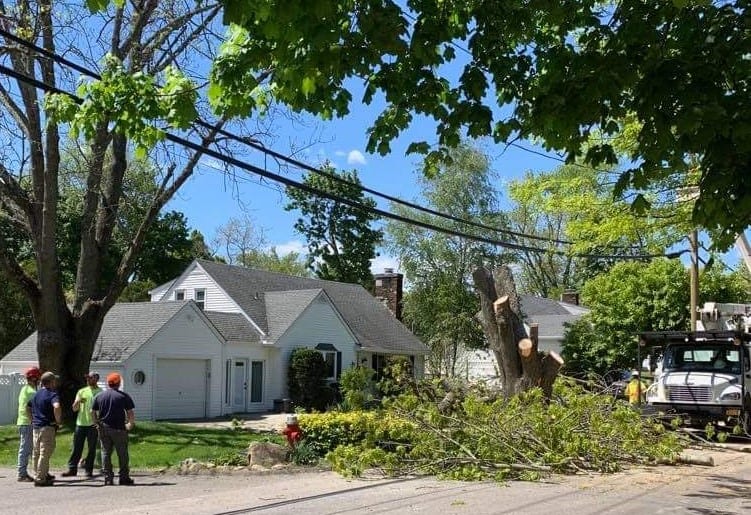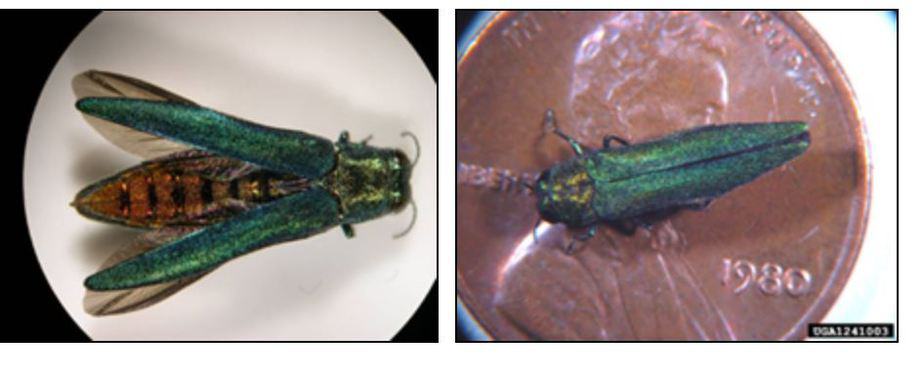Updated Some Huntington homeowners are contending with an infestation by a species of beetle that is eating its way through many ash trees across the country.
The emerald ash borer, native to Asia, turned up in Detroit in 2002 and was discovered on the East End of Long Island in 2019. Cornell Cooperative Services of Nassau County said that the infestation has spread to 13 states and two Canadian provinces, killing hundreds of millions of ash trees.
Large outbreaks of infestation have been reported in Selden and Smithtown.
Town spokeswoman Lauren Lembo said, “Unfortunately, the Emerald Ash Borer has made it way to Huntington. As such it will only be a little while before all the ash trees in Huntington become hazardous.”
The removal of infested ash trees requires either a permit or a waiver from the Planning Department if the tree is on the resident’s property. If the tree is in the right of way, the Highway Department would be involved.”
Patrick Finnegan, an arborist with the Huntington Highway Department, said that the borer infestation is nearly ready to emerge. “We’ll start seen activity in the next few weeks. You’ll see woodpeckers growing crazy. Trees will turn almost white, riddled with holes,” Finnegan said.
Almost every ash tree will die, he said. The insect drills holes and lays eggs, choking off life to the tree.
Ash trees can be saved from destruction only if the infestation is caught early, experts say. Other signs of infestation include D-shaped holes in the bark, loss of canopy and bark, and thinning and yellowing leaves.
The insect can fly, usually a distance of about half a mile but up to 10 miles in search of ash trees, and spread its infestation.
The state Department of Environmental Conservation said that all types of ash–blue, white, green and black– are susceptible to borer infestation.


